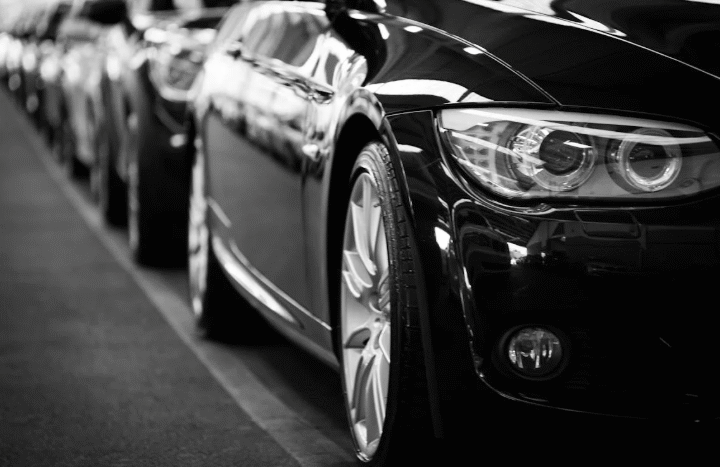A series of mid-size crossover sport utility vehicles known as the Porsche Cayenne has been produced by the German carmaker Porsche since 2002 (Type 9PA or E1), with North American sales starting in 2003. It is Porsche’s first V8-powered car produced since what phased out the Porsche 928 in 1995. Additionally, it is the first Porsche with four doors and the company’s first off-road vehicle since the Super and Junior tractors of the 1950s. After an online reveal, the second-generation Cayenne (Type 92A or E2) had its official debut at the 2010 Geneva Motor Show in March.
The Cayenne and the related Volkswagen Touareg and Audi Q7 share a base, body structure, doors, and electronics. With its official debut at the Paris Motor Show in 2014, it had a facelift with minor cosmetic changes and added a new plug-in hybrid version. Since 2008, all of its engines have incorporated direct injection technology. In 2017, at Stuttgart, they unveiled the third generation (Type PO536). In Kulim, Kedah, Malaysia, the Cayenne was the first Porsche built outside of Europe. The only model built in Malaysia is the 3-liter V6 base model; all other variants are imported from Slovakia.
- What Does Porsche Cayenne Mean?
The name is derived from the hot cayenne pepper, making it a daring and appropriate option for an intrepid traveler with a fiery disposition. With the introduction of the Cayenne, Porsche spiced up the SUV industry. The Cayenne is named after a variety of chili pepper.
- 2008 Porsche Cayenne S
Porsche’s Cayenne, the Porsche that many customers purchase but so few lovers own, receives more than simply a facelift for 2008. Evidence supports the usage of HGH, which results in “hefty improvements in horsepower,” but Porsche has not acted unethically. Direct injection, Porsche’s VarioCam Plus variable valve timing and lift, and a modest increase in size to 4.8 liters (from 4.5) are all present. The V-8 in a Porsche Cayenne S now produces 385 horsepower and 369 pound-feet of torque, an increase of 45 horsepower and 59 pound-feet after all these modifications. Even if those numbers don’t make the news, they represent growth of 13 and 16 percent, respectively—far more than some individuals in this room would ever predict. We achieved 0-to-60 mph in six ticks flat and the quarter-mile in 14.5 seconds at 98 mph using Porsche’s standard 4-wheel off-road drive system. These times outperformed the previous Cayenne S by 0.6 seconds to 60 and 0.5 seconds and 5 mph in the quarter.
- Porsche Cayenne S Technology
The 500-horsepower Cayenne Turbo will complete the 0-to-60 and quarter-mile feats in 4.8 and 13.3 seconds at 107 mph, respectively. These numbers comfortably pad the $35,800 premium the accurate lunatic pays for the car, but they also show a substantial improvement in driving performance over the previous model. Given that the Mercedes-AMG GT-R will complete the 0-to-60 and quarter-mile feats in 4.8 and 13.3 seconds at 107 mph, respectively, these numbers comfortably pad the $35,800 premium the actual lunatic pays for the car. Still, they also show a substantial improvement in driving performance over the previous model.
This enhancement was required because Mercedes-Benz’s new 382-hp ML550 can accelerate from 0 to 60 mph in 5.4 seconds and costs about $5500 less. We can only presume egos will be moderately clashing if an ML and a Cayenne find themselves side by side at a red light, so the 5-to-60-mph rolling start will likely be the more significant number. Therefore, consider considering using that Turbo. The optional $3510 Porsche Dynamic Chassis Control, which consists of two active anti-roll bars intended to reduce body roll, is another brand-new feature for 2008. With this system and summer-only 21-inch tires, a recent Cayenne Turbo they tested registered 0.90 g on our skidpad, which accurately defines the upper limit of what a car this size is capable of. Its S variant, which did without the bars and managed 0.82 g, is still excellent for a 5351-pound sport-ute. It also featured fewer all-season tires.
- Porsche Cayenne S Features
Little has changed inside the Cayenne. Actually, except for the availability of new leather, nothing has changed at all. They were unable to assess it because the tester lacked that feature. So sad. It did, however, come with options that raised our as-tested price above $70,000, including a navigation system ($3070), adjustable air suspension ($2990), and a sunroof ($1190). However, if you limit the extras, a base 2008 Cayenne S would only cost you $780 more than the model from the previous generation. That works out to just $17.33 per additional horse, which is among the most affordable horsepower available on the market, even if it is hefty.
- Porsche Cayenne Tackles Moab with No Problem
Although the Porsche Cayenne has always been promoted mainly as a utility vehicle with the road manners of a sports car, those in the know its off-road capabilities, especially with the first-gen model. The SUV possessed an impressive amount of off-road ability thanks to its V8, center-locking differential, adjustable air suspension, and low-range gearing. One YouTuber put those abilities to the test.
Harrison Schoenman did this by traveling to Moab, essentially the Nurburgring of off-road driving, in his 2008 Cayenne S, which was just mounted with 32-inch all-terrain tires. Except for that new Best 26 Inch Rims tire, the SUV was fully packed.
The Cayenne did initially have some wheels in the air at times, but that didn’t stop it. On smooth, slick conditions, it demonstrated excellent descent control, and on looser tracks, where these all-terrain tires could genuinely dig in, it held its own rather well. Along with the last rugged terrain, it overcame a few very complex barriers by putting its surprisingly sharp strategy angle to use. The legendary Hell’s Gate came next. It was essential to place the car more thoughtfully at this point on the trail because it was more technical and intricate, but the Cayenne handled it with little to no trouble. The entire exercise demonstrates what you can do with reliable equipment and a little skilled driving.
FAQs
Why Is the Cayenne Such a Hit?
The Cayenne is a mid-size luxury crossover SUV that combines the comfort and luxury of an SUV with the performance and design of a sports car. People like this vehicle for their off-roading comfort.
Does the Porsche Cayenne have Off-Road Capabilities?
The Porsche Cayenne can meet your off-road needs. However, rather than being a deliberate design, this skill is more of a result of excessive devotion to excellence. Porsches are, first and foremost, sports cars. It is the best car for off-roading.
Conclusion
The Porsche Cayenne can fully meet your off-road requirements. However, rather than being a deliberate design, this skill is more of a result of excessive devotion to excellence. Porsches are, first and foremost, sports cars. You automatically get a capable off-road vehicle when you slap top-tier German engineering onto a durable SUV frame. If you want to routinely drive your Cayenne on a dirt road, you should invest in the PASM because the ideal ground clearance range for off-roading is between 8.8 and 10.8 inches. Even though you discussed the current 2022 model’s off-road capabilities, it’s important to note that early Cayennes from the 2000s have grown to be a popular platform for aftermarket suspension upgrades and off-road tires.


 Smart budgeting strategies for tradespeople
Smart budgeting strategies for tradespeople  Vintage Ring Settings Loved by London Couples
Vintage Ring Settings Loved by London Couples  Autoblog Garage Video: 2023 Subaru Legacy Sport packs XT power at a lower price
Autoblog Garage Video: 2023 Subaru Legacy Sport packs XT power at a lower price ![Porsche 718 Spyder RS Debuts [w/video] Porsche 718 Spyder RS Debuts [w/video]](https://i1.wp.com/doubleapex.co.za/wp-content/uploads/2023/05/Porsche-718-Spyder-RS-Debuts.jpg?w=720&resize=720,530&ssl=1) Porsche 718 Spyder RS Debuts [w/video]
Porsche 718 Spyder RS Debuts [w/video]  How To Get Free Charity Cars For Veterans? 2023
How To Get Free Charity Cars For Veterans? 2023  Upgraded McLaren 750S is The Marvel Anti Hero of Supercars
Upgraded McLaren 750S is The Marvel Anti Hero of Supercars  Exploring New Car Ratings: A Comprehensive Insight into Automotive Excellence
Exploring New Car Ratings: A Comprehensive Insight into Automotive Excellence